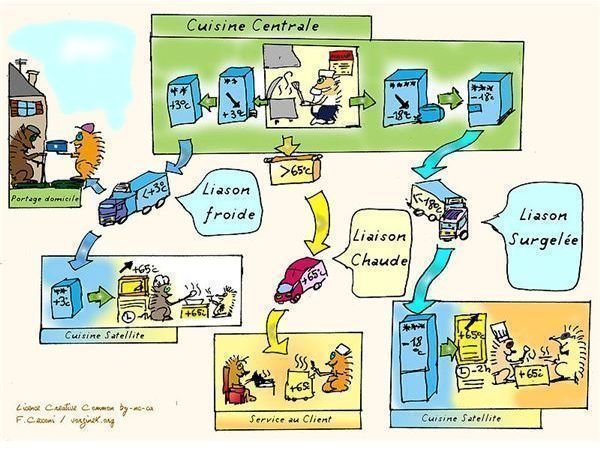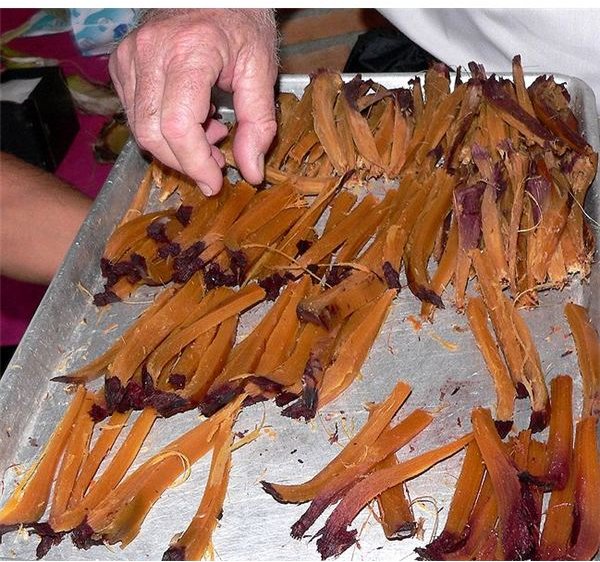Defining Food Product Safety in the US via the HACCP System
The Meaning of Food Safety in the US
The US Department of Agriculture deifnes food safety in the US as the set of procedures, by which all types of food should be handled and processed by food manufacturers and consumers alike. This is to ensure the elimination of food poisoning agents that naturally exist and subsist in raw foods, as well as prevent any possible contamination that could cause the spread of foodborne illnesses and deadly diseases.
Most consumers are unaware of the food poisoning threats posed by naturally occurring bacteria and pathogenic viruses that could contaminate food. They are found in almost all types of food provisions, either as fresh, raw, cooked, preserved and organic, whether they are locally grown or imported from regions outside of the US.
There should be a general awareness about these different types of food poisoning agents, particularly the pathogenic microbes. The latter, have the ability to grow rapidly in numbers that could reach scientifically established “danger zones”, if given the right temperatures and conditions.
In addition, the World Health Organization has also raised its concern about the possibility that these pathogens, shall be used deliberately to launch bioterrorist attacks against people and property. As naturally occurring biological agents, they can be released in the air and water; in the process contaminating food while being transferred from their points of origin to the markets.
The Four Groups of Foodborne Poisoning Agents that Pose Threats to Human Health

Bacteria, the most common of those that occur during food spoilage, can be determined because of the waste products they produce. These cause changes in the odor, color, texture and taste of food that is spoiled. Fruits and vegetables that are spoiled or rotten are described as pungent-smelling, mushy and slimy.
The type of bacteria that we should be wary of are the pathogens that flourish at a rapid pace and at temperatures between 40°F and 140°F. These are unsafe temperatures considered as unsafe conditions for food left unrefrigerated for an hour at the least. Examples of pathogenic bacteria are E. coli o157:h7, campylobacter and salmonella, which do not cause the food to undergo any transformation in smell, taste, texture and odor.
Parasites, that formerly existed in the bodies of slaughtered animals, tend to contaminate other meat products and the crops brought from farm to market. Some parasites may still exist in the carcasses and blood of the slaughtered animals and could contaminate the other meat products during handling. The eggs of chickens that host parasites within their bodies may also be contaminated by parasitic protozoa, roundworms and tapeworms. Therefore_,_ it is no longer safe to eat eggs that are raw.
Certain antibiotic drug substances have been introduced in animal feeds as growth boosters and fatteners, thus preventing those animals from responding positively to certain antibiotic medications against parasitic infections.
Molds, Natural or Chemical Toxins – Although these food poisoning agents are not as common and rapidly occurring as bacteria, certain cases of food poisoning incidents have been linked to these substances. To provide an example, the lubricants used in the machineries being utilized to automatically process some of the food products that consumers buy, have been known to accidentally leak. Even a minor incident can cause food contamination in a whole batch of processed foods.
Allergens were contained in foods which were not properly labeled. Allergens like nuts, eggs, milk or seafood could adversely affect a person whose body composition reacts strongly to these types of allergy-causing ingredients. A person who reacts strongly to such types of foods would have avoided them had they been properly labeled with complete information about its ingredients.
Turn to the next page for information about the HACCP system that defines the food safety policies implemented by the US Department of Agriculture.
The Hazard Analysis and Critical Control Point (HACCP) Food Safety Systems

The Hazard Analysis and Critical Control Point System is a scientifically designed control system implemented throughout the food chain to identify and assess the potential food hazards from the point of primary production to its final consumption. As the food safety detriments were established, certain tools were scientifically and strategically placed to prevent, establish and control evidence of the potential risks to human health.
The system requires multidisciplinary approaches that require expertise in agronomy, chemistry, food technology and environmental engineering. Its main focus is prevention and not the end-results of food testing as aid to the regulatory inspections of authorities. Increasing the consumers’ confidence in the food safety policies and measures being undertaken in the US, will likely promote international trade that will benefit the US food industries.
As such, the HACCP system maintains compatibility with the ISO 9000 series for food safety management. In addition, it is capable of adapting and accommodating any changes related to advancements in food processing procedures, equipment designs and technological developments.
The Seven Principles Adhered to by the HACCP Systems to Ensure Food Safety in the US
- Conduct analysis of any existing hazard.
- Establishment of the critical control points at which food safety hazards may occur.
- Determine the critical limits.
- Instituting the corrective actions that should be taken, in cases where the monitoring system discloses certain irregularities for a certain critical control point.
- Setting-up procedures that provide confirmation through verification if the HACCP system is operating efficiently.
- Maintain proper records of all related procedures and principles, observed in the application of the system.
Four Basic Food Safety Procedures Which Consumers Should Observe

The HACCP system embodies and defines the policies and procedures observed for food safety in the US, as monitored by the Department of Agriculture in regulating the meat and poultry products, as they are transferred from farm to market.
In line with this, the said federal agency advocates four basic steps, which consumers should observe as precautionary measures when buying, handling, preparing and storing food:
Clean – Always keep your cooking implements, kitchen surfaces, storage freezers and hands, clean. Fresh fruits and vegetables should be washed thoroughly and peeled properly before they are eaten.
Separate – Wrap, secure and store food separately, in order to prevent cross-contamination, particularly among those food that leach or drip with their natural juices or liquid content.
Cook – Never eat raw meat or eggs; cooking them at a certain temperature will destroy the harmful pathogens that thrive on raw foods. Do not judge the food as cooked based on its color. Research studies have shown that some food may turn brown or change its color, yet, some of the harmful bacteria may still subsist.
The USDA recommends the use of large-dial oven-safe or oven-probe food thermometer, to determine if the food has been cooked at the right temperature. Observe the following temperature guidelines:
- 145 °F = Fish, beef, lamb, veal steaks & roasts
- 160 °F = Ground beef, pork, veal & lamb; pork chops, ribs & roasts; egg dishes
- 165 °F = Ground turkey & chicken stuffing, casseroles & leftovers; chicken & turkey breasts; poultry legs, thighs & wings; chicken whole; & turkey, whole
Chill – Chill leftovers and do not allow them to remain at unsafe temperatures beyond 40 °F for more than 2 hours. If the temperature is above 90 °F, discard perishable foods left unrefrigerated for more than an hour. Store frozen foods brought home from the grocery store immediately, or within two hours. Observe the frozen food safety storage recommendations based on the FSIS Freezer Storage Chart.
The FDA, on the other hand, oversees and defines the product safety issues that producers and manufacturers should observe for fresh produce, canned and imported goods, processed foods, milk, shell eggs and all other foods that do not contain meat and poultry.
Reference Materials and Image Credit Section:
References:
- Keep Food Safe —https://www.foodsafety.gov/keep/index.html
- Biodefense and Bioterrorism —https://www.nlm.nih.gov/medlineplus/biodefenseandbioterrorism.html
Imgae Credits:
- https://commons.wikimedia.org/wiki/File:Lunch.jpg
- https://commons.wikimedia.org/wiki/File:Geographic_MOSAIC_MODEL_of_Coevolution.jpg
- https://commons.wikimedia.org/wiki/File:PCEA_liaison_froide_chaude_surgelee_transport_al
iments.jpg - https://commons.wikimedia.org/wiki/File:Agave_pieces_roasted.jpg
